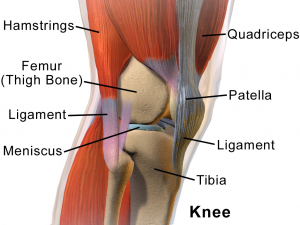What is a Meniscus Anyways?
Meniscus lesions account for almost one quarter of all knee injuries. Whether it’s an acute trauma or repetitive chronic degeneration we ask the menisci to cushion the knee. Your menisci mainly function to distribute stress across the knee during weight bearing activity. Injuries to this cartilage impair your ability to absorb shock and cause misalignment between the joint surfaces. Think of them as car’s suspension between the body and the wheel. They are important to absorb impact and distribute braking power evenly across the joint.
It is no surprise that older individuals have a higher rate of meniscus tears compared to younger individuals. Older adults develop faulty movement mechanics, more osteoarthritic changes, and joint degeneration. What’s strange is that surgical remedies differ depending on your age.
- For individuals older than 45 years old you are more likely to have a portion of the meniscus removed (meniscectomy). This mean removal of a portion of your knee’s shock absorbers!
- Individuals younger than 35 years of age are more likely to have the meniscus repaired.
Meniscus procedures have become more and more common over the past decade, but the success rate of the surgery has not. Ask your physician if they plan to remove or repair your meniscus, and why. This explanation should aim to conserve as much healthy tissue as possible. Imagine having only half the suspension capability on your car.
When To Get Surgery And When to Avoid It
The type of tear is the most important indicator to determine the treatment approach for effective healing. There are two types of meniscus injury – acute and chronic – and we can use the car suspension analogy to assist in understanding.
- Acute: You may have experienced a trauma that distinctly caused your pain. Similarly, it’s like getting into a minor car accident that causes your suspension to operate inefficiently. This pain may be characterized by a painful click or lock; it may give you a sensation of being “unstable,” and makes you a candidate for arthroscopic surgery. However, patients who have non-surgical management for meniscus tears have similar to better outcomes in terms of strength and knee function in the short/intermediate term compared to surgery. This is an important consideration when weighing non-surgical vs. surgical solutions.
- Chronic: This is the chronic “wear and tear” degeneration. In a car, your suspension naturally losses its effectiveness from overuse. There is strong evidence for non-surgical treatments, like Physical Therapy, for chronic or degenerative meniscus tears. If you are suffering from pain or lack of ability following this type of meniscus injury, give your Physical Therapist a call. You may benefit from a specialized treatment approach to take the stress off of a painful meniscus.
Patients who have non-surgical management for meniscus tears have similar to better outcomes in terms of strength and knee function in the short/intermediate term compared to surgery.
Leave Post-Surgical Rehab to the Experts
Following meniscectomy, research supports individualized exercise prescription. This also includes hands-on treatment, and coordination re-training. Supervised therapy showed “significantly higher” improvements in pain, muscle strength, and function when compared to the “no therapy” control group. Supervised exercise programs will provide precise movement correction to ensure proper performance. From day 1 to day 100, PT’s are equipped with the knowledge and experience to get you geared up for your next skiing or hiking season.
CITATION
Østerås H. A 12-week medical exercise therapy program leads to significant improvement in knee function after degenerative meniscectomy: a randomized controlled trial with one year follow-up. J Bodyw Mov Ther. 2014;18:374-382. https://doi.org/10.1016/j.jbmt.2013.11.015
Thorlund JB, Juhl CB, Roos EM, Lohmander LS. Arthroscopic surgery for degenerative knee: systematic review and meta-analysis of benefits and harms. Br J Sports Med. 2015;49:1229-1235. https://doi.org/10.1136/ bjsports-2015-h2747rep
The information provided on this site is intended for your general knowledge only and is not a substitute for professional medical advice or treatment for specific medical conditions. You should not use this information to diagnose or treat a health problem or disease without consulting with Heather Lane Physical Therapy or another qualified healthcare provider.



